Lockage Types
When taking a yacht through the Panama Canal locks there are a number of configurations that can be used.
You must always be prepared with four linehandlers in case the plan changes and you need them. If you are center chamber by yourself you will need all four linehandlers, if you are the middle of a raft you don’t need any.
You should have enough lines and fenders deployed or ready to cope with any situation.
Centre Chamber
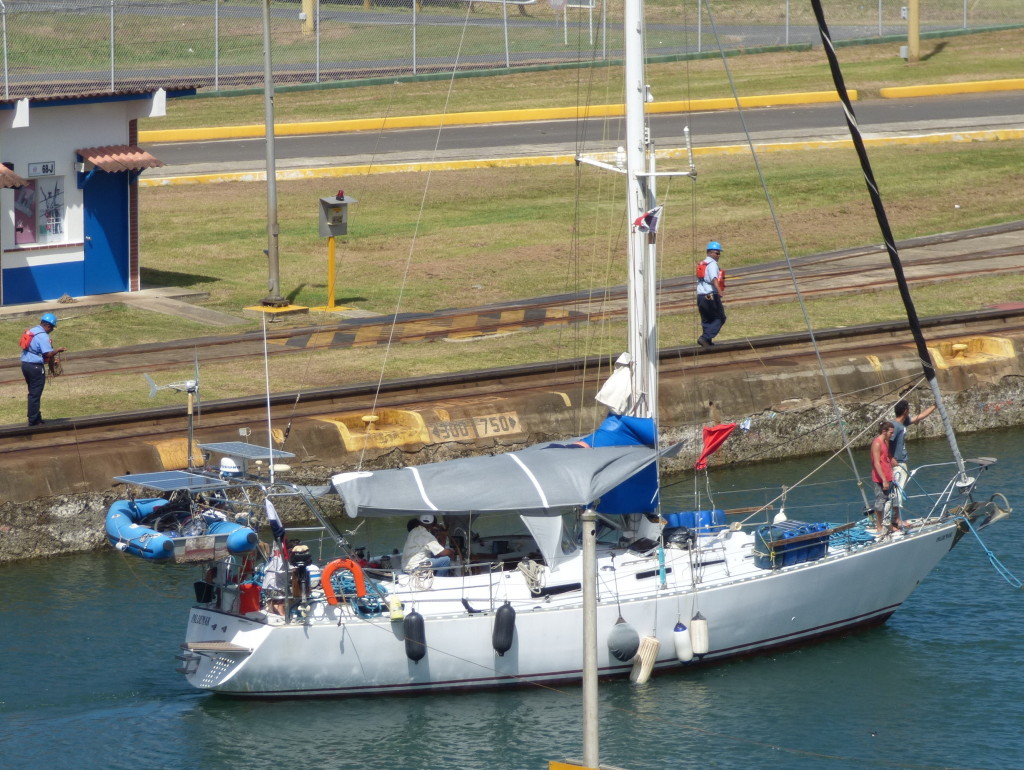
- Best method for keeping control as you have four lines ashore
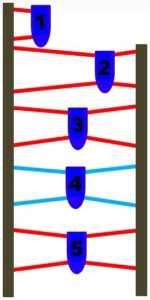
(1) Approach the centre wall (the longest) to get the first two heaving lines on board and attach them to the mooring lines
- Watch out for the weighted end of the heaving lines
- Protect your solar panels
- Use a simple but secure knot that the shoremen can untie easily
- Either a bowline loop or a clove hitch is suggested
- The Advisor can ask the shoremen to throw the lines forward so they avoid solar panels or land in more open deck area
- If one heaving line falls short, you might be able to tie the other heaving line to two mooring lines
(2) Move ahead and across to the other side to pick up the next two heaving lines and attach them to the mooring lines
(3) Move to the centre of the lock and ahead into the first chamber
- The shoremen will walk the lines forward with you
- Make sure that you are only moving at walking pace between the chambers
- Try to keep the lines out of the water but not too tight
(4) The shoremen pull the mooring lines across and secure them
- As the lock fills, the linehandlers take in the slack of each line
- On emptying, the linehandlers ease out the lines
- Try to keep the yacht central and straight
- When finished, the linehandlers pull in the mooring lines but do not untie them
(5) The shoremen will walk forward with the lighter lines
- As the lock sides ramp up or down, help the shoreman by holding the line as high as you can above your head
- When in position, the linehandlers pull in the mooring lines again and you repeat the process
(6) The shoremen will untie the heaving lines when you are finished
- Don’t give them enough slack to throw off the mooring lines until you are ready
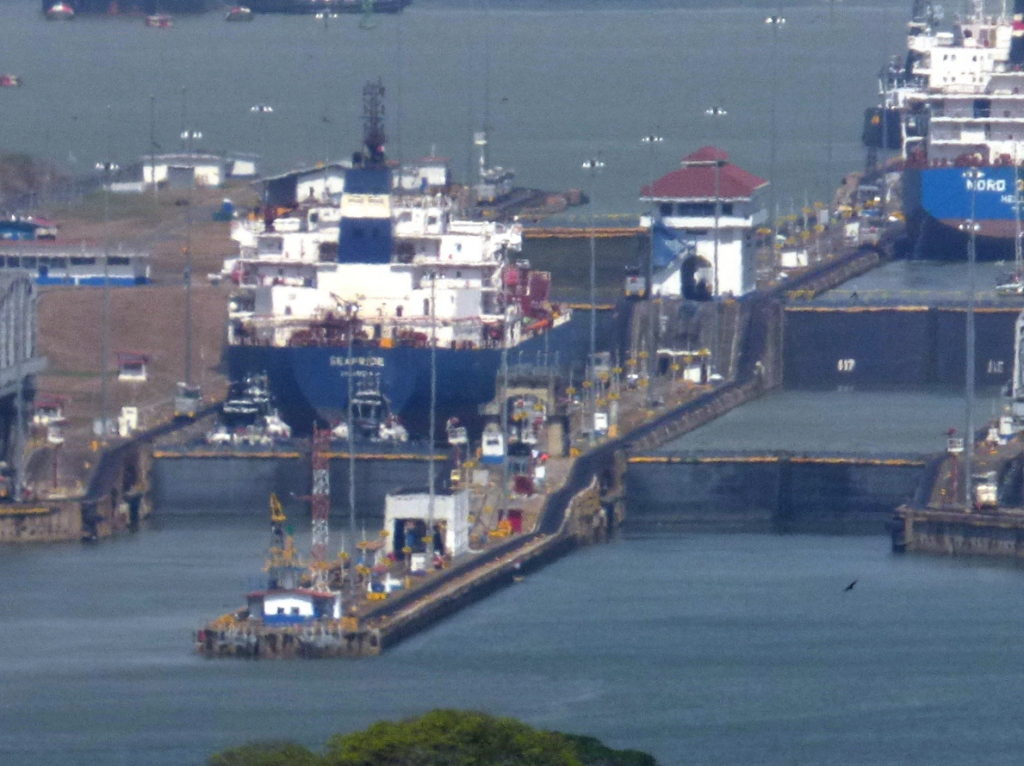
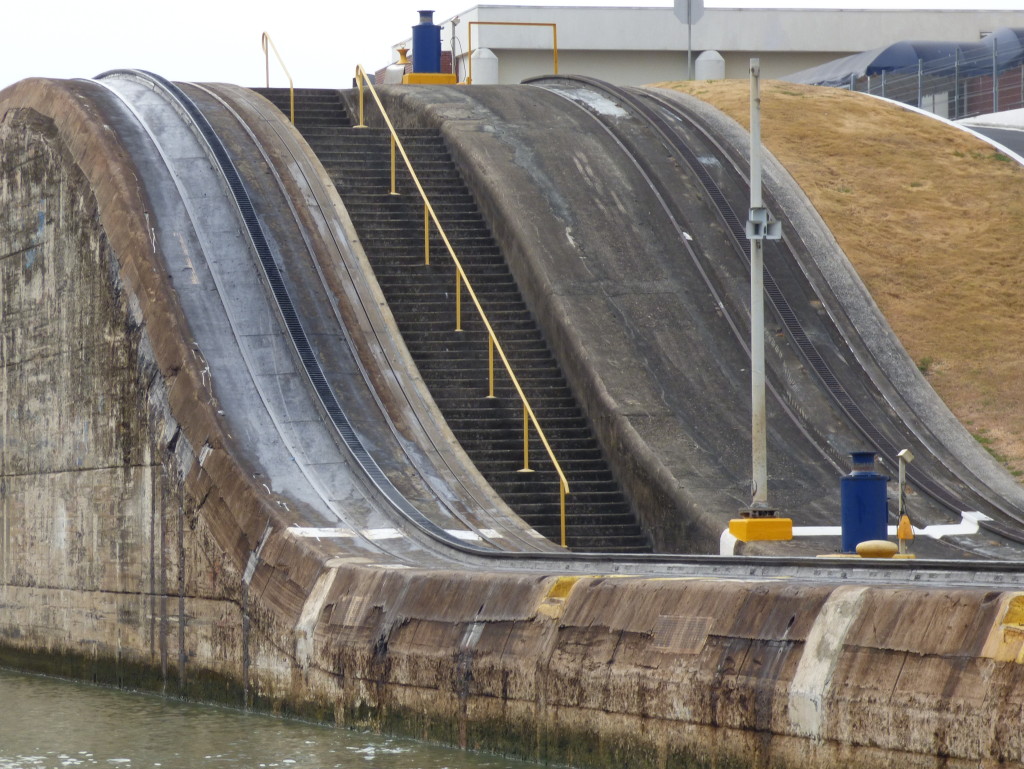

Nested with other yachts
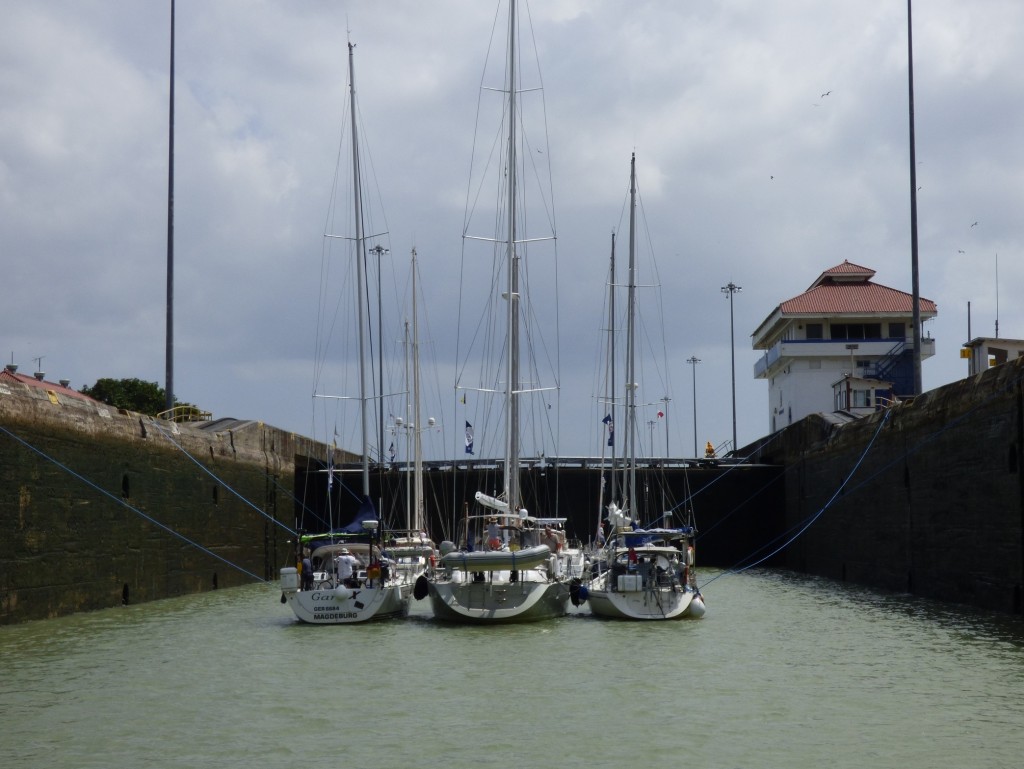
- Just like centre chamber but each outside yacht handles two lines ashore
- If a large yacht such as a catamaran is in the centre, they might take all four lines and the outside yacht will be a “fender”
- The raft is formed outside the locks and the yachts move together between chambers
- The yacht with the most powerful engine will be designated the master vessel, and the Canal Advisor on that yacht will call engine orders to the Captains.
- You will have very little way on to provide steering, so it is all done with engines.
Alongside an ACP tug or Tourist Boat
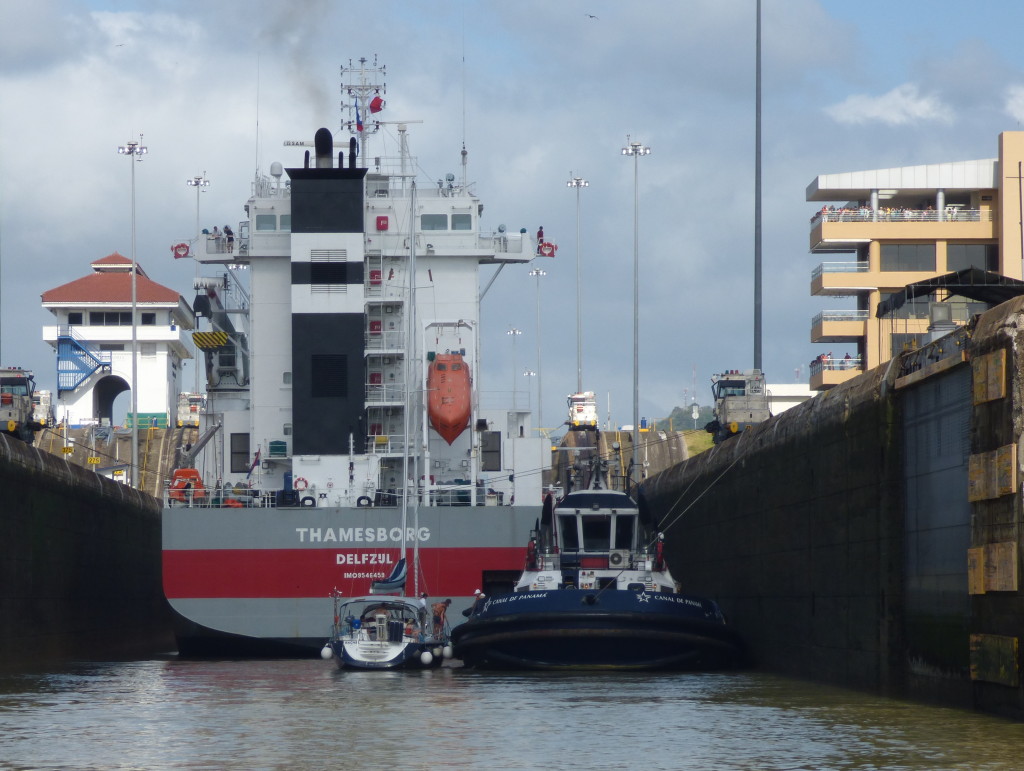
- Tie up next to the tug or tourist boat and watch
- Tugs will always tie up to the land-side wall rather than next to the center wall (in case an evacuation is necessary, and also because much of the water comes from culverts in the outer walls, so the water crosses the chamber and is reflected, which will push the boat off the wall, potentially breaking lines)
- The commercial Captains are sometimes impatient and inconsiderate which causes problems
- The problems occur when you untie and move separately between the chambers, as it can be very difficult manoeuvring in the downlock procedure due to the currents
- Downlocking in Miraflores can often see 3-4 knot currents from astern, and strong stern winds funneling in the locks
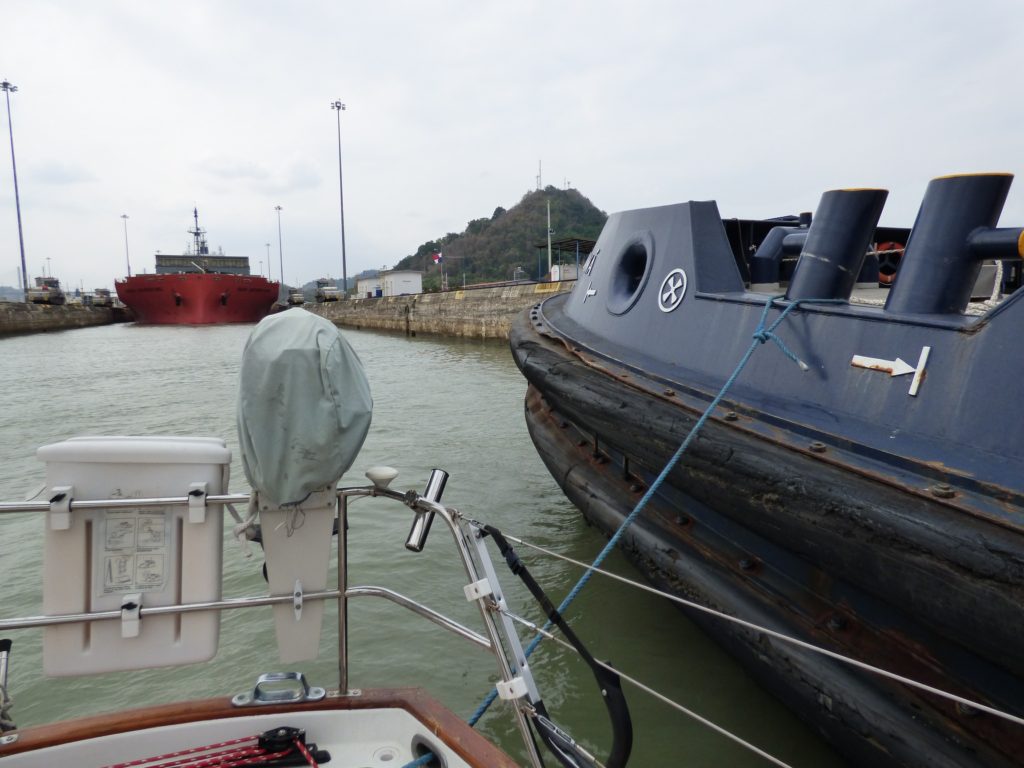
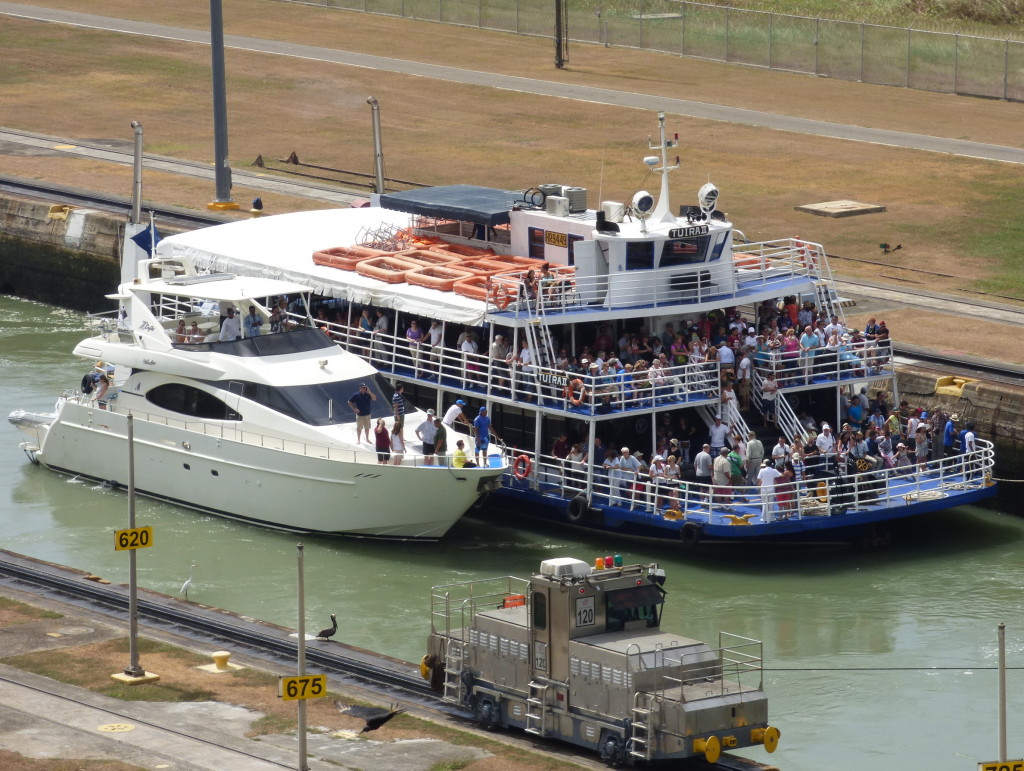
Sidewall

- Next to the lock walls with two lines ashore
- Use plenty of fenders (preferably not the human variety) and some boathooks
- This has a reputation for being difficult but is not so bad
- Locking up is worse due to the turbulence of the water entering the lock from below, which can cause the yacht to roll and strike the sidewall
- A catamaran might find sidewall the easiest method of all
- You will always tie up to the land-side wall rather than next to the center wall (in case an evacuation is necessary, and also because much of the water comes from culverts in the outer walls, so the water crosses the chamber and is reflected, which will push the boat off the wall, potentially breaking lines)
The entire procedure will be under the supervision of the Canal Advisor who will be communicating with the Lockmaster and other Advisors as appropriate.
On to Linehandlers or back to Transit the Canal